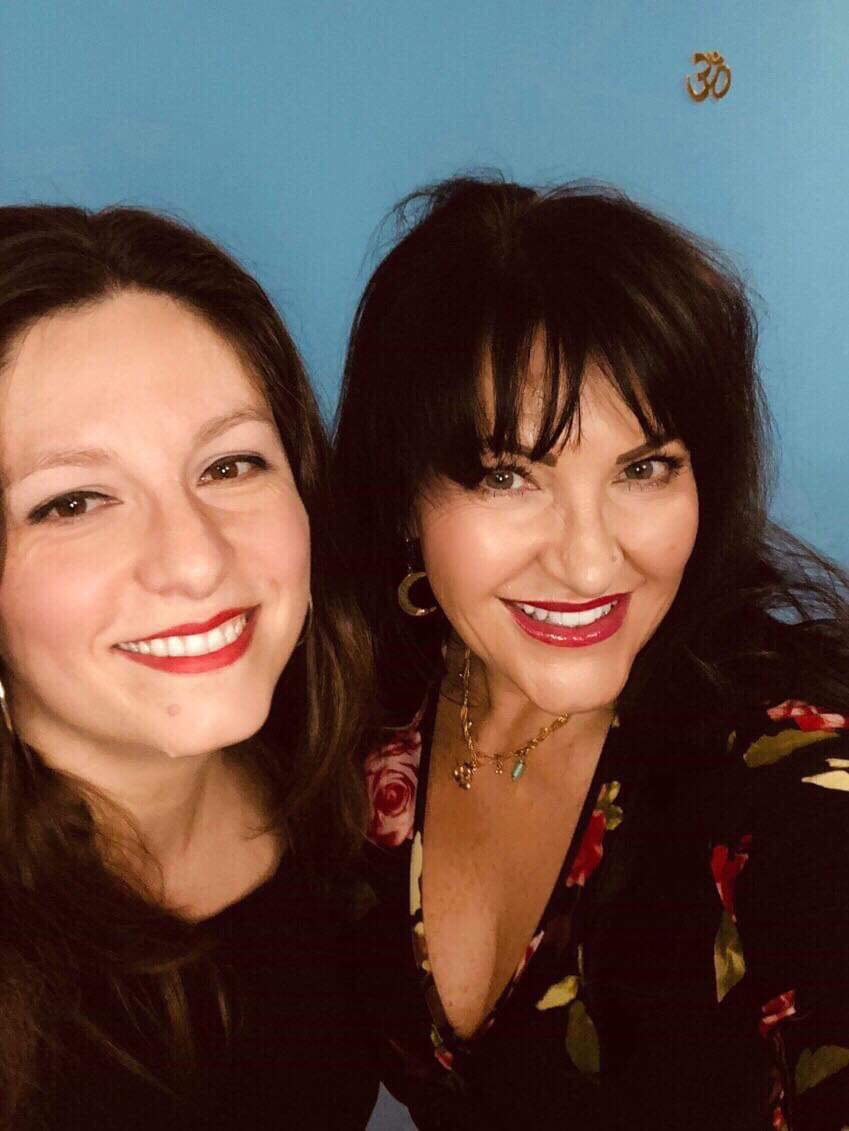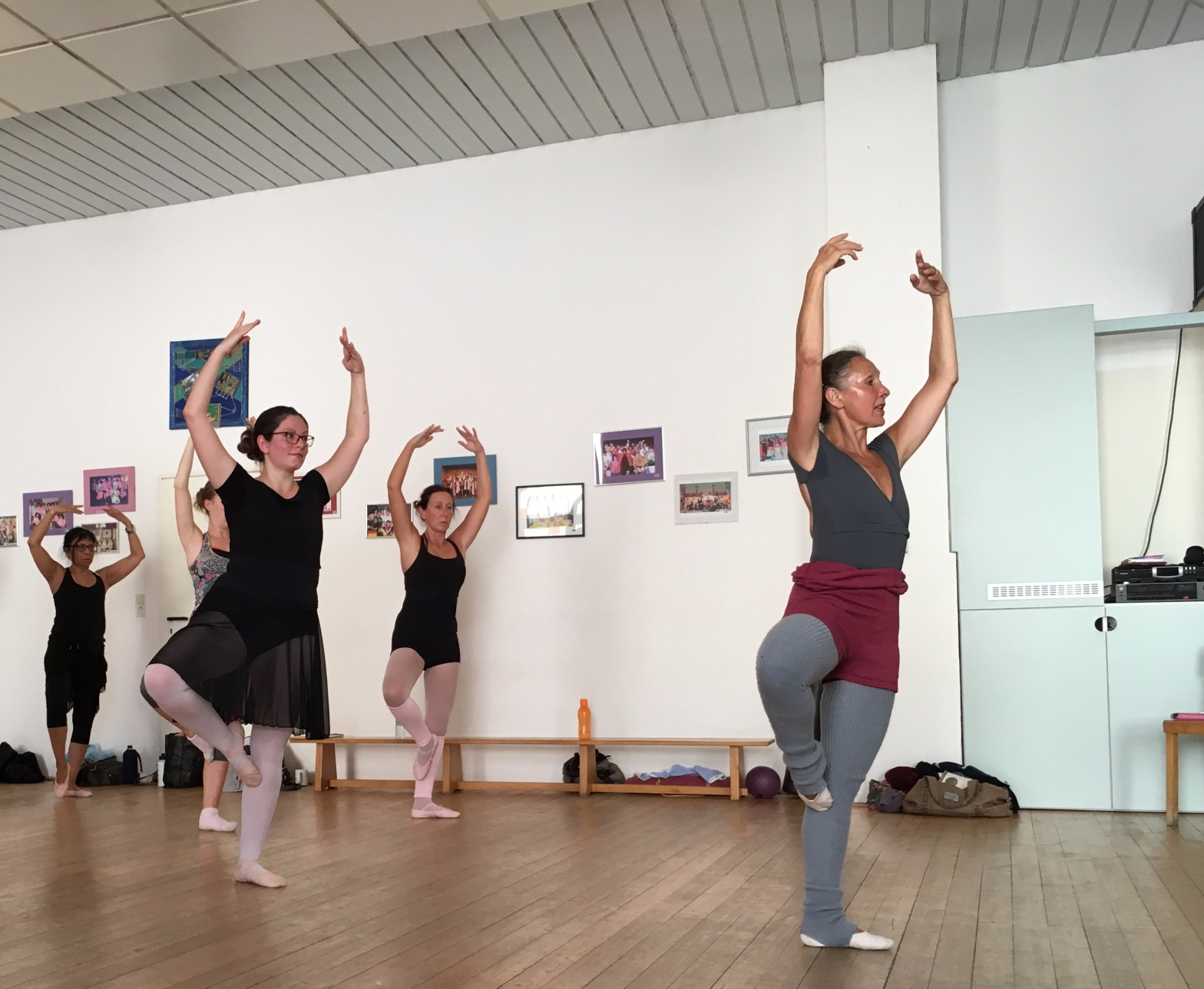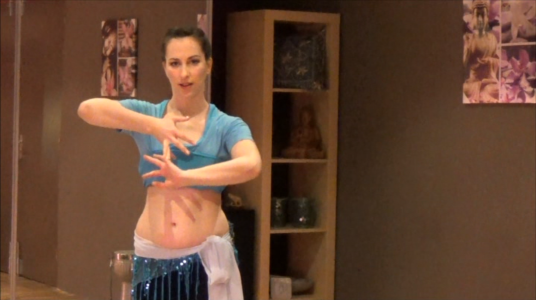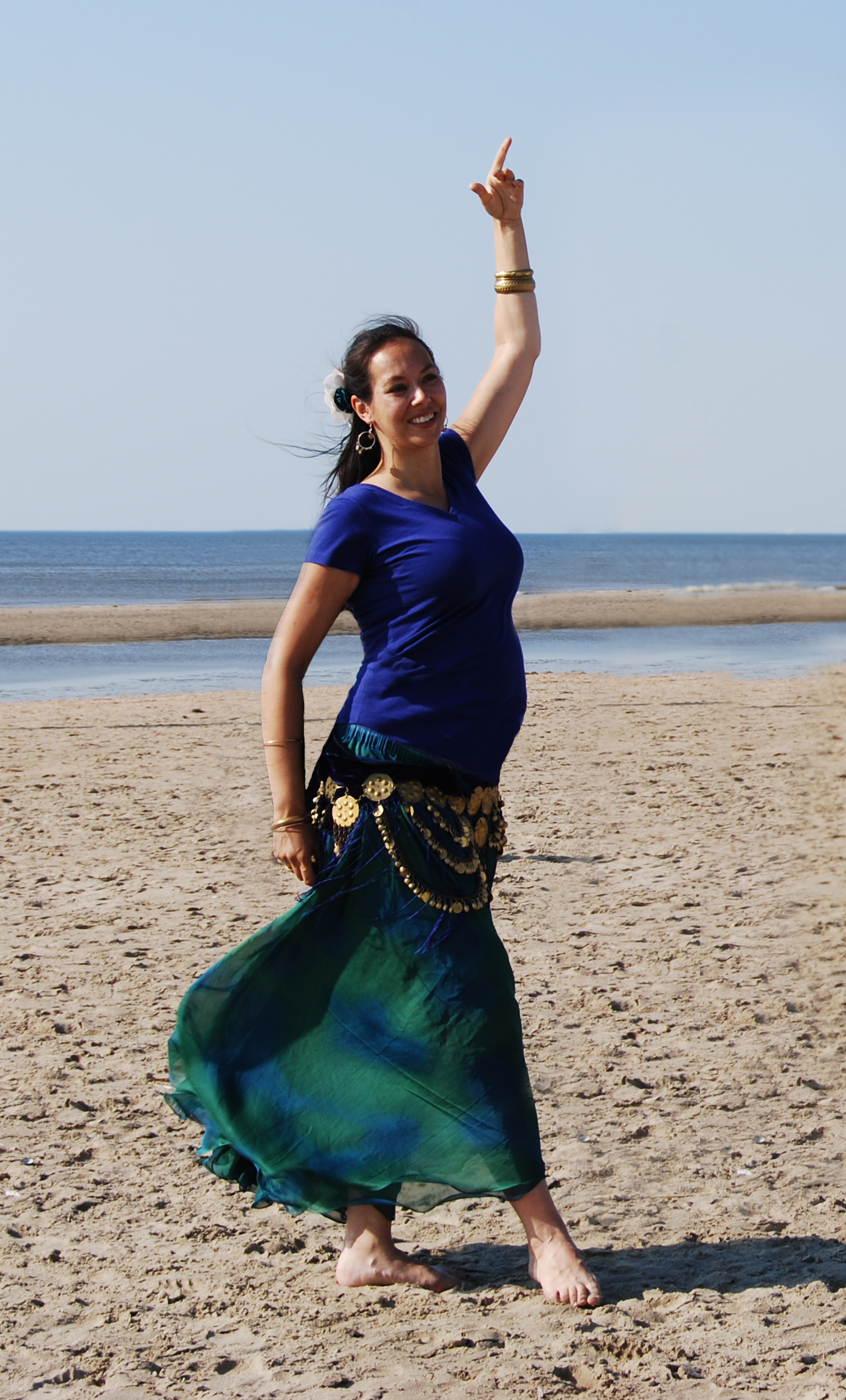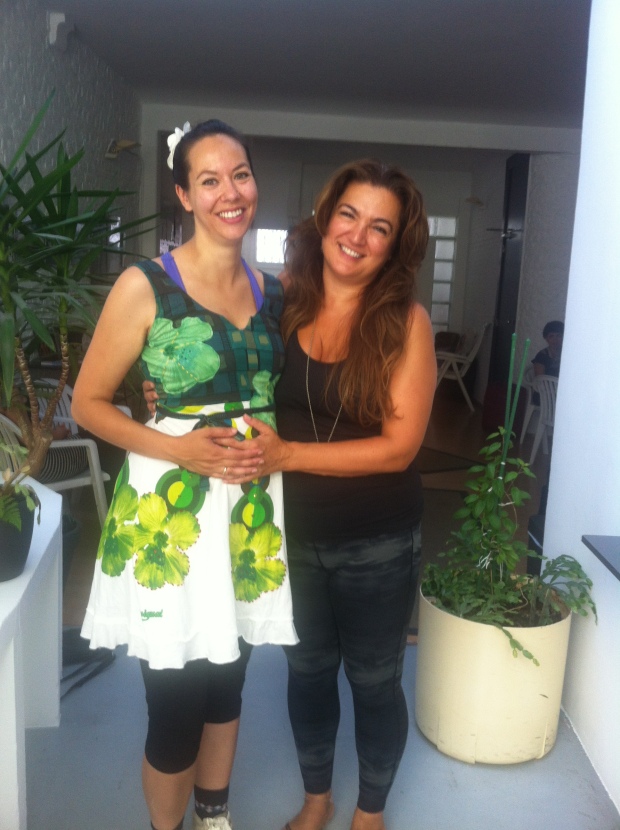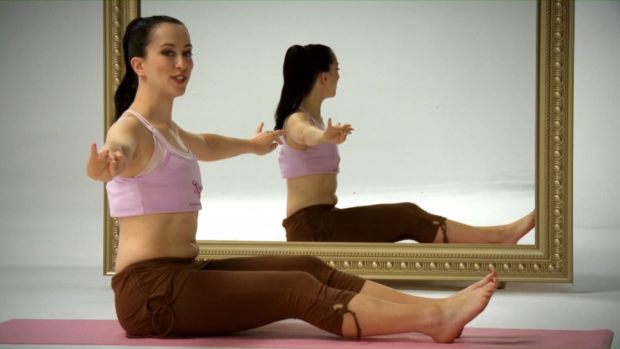Dear readers, I’m thrilled to bring you today’s guest post from Kyria, a bellydancer from the Netherlands. Kyria and I have chatted online about our shared obsession with bellydance DVDs, and I asked her if she could provide a professional dancer’s perspective on how and which DVDs to use for at-home training.
This is the first installment: a guide to Kyria’s favourite DVDs and how they fit into her practice. Which of these do you use? Are there others you also recommend?

I started bellydancing fifteen years ago, when video instruction was practically unheard of in the Netherlands. At best, dancers who travelled to Egypt brought back bootlegged VHS videos of famous dancers. We played these over and over again and tried to copy the moves and figure out what the dancer was doing.
I learned to bellydance through weekly classes from various live teachers, which was invaluable because beginning dancers need corrections and feedback in order to learn correct form, posture and technique. And boy, did I need correction! I still do, that’s why I take weekly ballet classes and go to workshops. Being a professional dancer means being a lifelong student.
I enjoy learning new things and believe that regular practice and exercise not only make me a better dancer, but they also keep me sane and healthy. However, due to work and life I sometimes don’t have the opportunity to follow classes with a live teacher. That’s why I build my instructional bellydance DVD library. Not dancing or not learning is simply not an option for me.
Streaming, downloading and the good old hardcopy DVD
Lately the market is expanding into streaming live classes and services that allow subscribers to download or stream instructional classes. This is a great way to try out classes, and it is very flexible and suited to individual needs. For me streaming doesn’t work as I hate it when the connection falters, but if your internet connection is fast and flawless, it’s a great service. I am also pretty hardcore in the sense that I like to own material. If the mood strikes me and I want to practice or research, I want it to be available and in my possession. That’s why I prefer DVDs.
What DVDs I would recommend for practice at home for an intermediate to advanced dancer? Here are my criteria for regular practice:
- I pick DVDs that are intermediate level or up. I have a need for speed and quality and want my practice to be as effective as possible;
- I like to shop around in (belly)dance styles so sometimes I use an Egyptian DVD, other times ATS. Don’t get me started on my fitness DVDs!
- I like to go through a DVD at least 5-7 times, to really absorb the concepts, technique and choreography. It’s like following a semester of real classes: one class is not enough to fully understand and learn the material. I revisit my DVD collection as often as I can;
- Sometimes I have fifteen minutes, sometimes I have 90 minutes. I like DVDs that offer me flexibility to create a session that fits my time schedule.
My DVD recommendations for at-home practice:
Jillina – Shape Up n’ Hip Out!
This is my go to DVD if I want to do some cardio, dance and be challenged by some combinations. The brilliance of this DVD is that it contains three twenty-minute work-outs: beginner, intermediate and advanced. All three are good. When I am in a hurry I do the intermediate and advanced one. Jillina is a very generous and warm instructor and I’ve taken multiple workshops with her through the years. She delivers every time with exciting and interesting choreographies and has excellent didactic skills.
Rachel Brice – Serpentine
This dancer knows how to teach! I hope to do a weeklong with her someday. In the workshops I took with her in the past she hadn’t advanced yet to where she is now as an instructor. The two-DVD set contains drills, choreography and some talks and information on several subjects like the backbend. This kept me busy for months. Easy to pop in and choose what you want to do for the day. My only minor negative point is that the yoga warm-up and yoga cool-down are too long for my taste.
Jenna – The Heartbeat of Bellydance
Rhythms, a couple of choreographies and live drumming. What’s not to like about this one? The performances are taped in a cramped studio so I don’t think they convey well on this DVD. Great for intermediates to get to know rhythms and dance to the different rhythms. As a professional dancer, repetition of rhythms is always a good thing. The choreographies are not that complicated but Jenna has a personal style that is different from mine (so lots to learn) yet similar in musicality that I keep coming back to it because it is fun.
*my personal pet peeve is that I am big on musicality. DVDs that use awful music, that are edited with the dancer being out of sync with the music or dancers that have a musical interpretation that opposes mine are not on this list. I grind my teeth and put up with blegh music if the quality of the instruction is high or the content is awesome)*
Ranya Renee – The Baladi
The elusive baladi is captured on this DVD set. It is hard to videotape, explain and show baladi on a DVD but Ranya does an excellent job. She shows the instruments, explains the progression in the music, and offers nifty visual explanations on what muscles to engage and on to the actual dancing. I love that this is an instruction for improvisation and the baladi is one of my favourite styles. I have to be in the mood for this DVD and let the material simmer a while to get results, but it is one of the few DVDs that aim to create a strong connection between dancer and music. Improvisation and musicality are essential for a professional bellydancer.
Aziza’s Ultimate Bellydance Pratice Companion
Buy it. Now. I’ve been using it for over seven years and I enjoy it every. Single. Time. Aziza is engaging, charming and knowledgeable and makes a 21-minute shimmy drill fun. This DVD can be used by beginners, intermediates and advanced dancers, making it rather unique in the world of instructional DVDs. Her workshops and Dreamcamp are also amazing and I highly recommend her. I took my first workshop with her in 2009 and I still go as often as I can as she keeps on working on new material and concepts.
Suhaila – Bellydance for Beginners 4 Volume Set
Suhaila Salimpour’s style might be your cup of tea, or it might not. This DVD set gives you a taste of her philosophy, in bite-sized work-outs. Each one contains a bit of drilling, combinations, and a short choreography. I did a three-day intensive with Suhaila which is much more focused on her method and philosophy. But, as a dancer with limited time, this set gives me a taste without needing to emerge completely in her concept. Even if Suhaila’s dance style is not your thing, her ideas about drilling, muscle isolation and layering are fascinating and quite useful. Plus glute squeezes can be done anywhere! Her glute squeeze technique has brightened up many long meetings at work.
Jillina – Instructional Bellydance with Jillina 3 DVD Set
For the choreography junkie in me, Jillina delivers excellent material that satisfies my hunger for surprising combinations, music interpretation, and footwork. Her footwork patterns are influenced by ballet, modern, jazz, and the Reda Troupe style of dance. Footwork is what I need to create my own improvisations and choreographies and beginner DVDs usually include a very basic level. If you are at a point where you want more, try this DVD set.
Jenna – Bellydance – The Next Level
I like this DVD because the warm-up is perfect for my body and Jenna is very good in explaining concepts. The drills section is great for an oriental style drill, and there are two choreographies I can work with to internalize the material. The drum solo is fun. My only comment is that the music is hard to come by as a European dancer, so I stream it from a Spotify playlist for my own practice.
Zoe Jakes – From A to Zoe
Lots of drills and classes with Zoe Jakes, with great tips on flutters and abdominal isolation. The nice thing about Tribal Fusion is that it has a different way of using and combining moves, and the stylisation is completely different compared to bellydance. When I feel like going out of my comfort zone, this is a good one.
Michelle Joyce – Killer Ziller
I didn’t include specialty DVDs in this list because I wanted to give a general list. I am not going to include DVDs on veilwork, assaya, khaleegy, Turkish, etc. I make an exception for zills as they are not specialty but a basic piece of knowledge for a professional bellydancer. They are a musical instrument that need to be trained as often as possible while dancing. I like to slip on my zills during regular DVDs and play basic zill patterns to get them into my system. This DVD offers a range of zill drills, combined with dance moves. It is perfect for regular practice and increasing awareness of playing zills while dancing.
Interesting links
Learning to bellydance from video – Shira
Eight dvds for home practice– Ananke
Learning bellydance by DVD – Jade
Online bellydance classes that I used, liked and recommend
Datura – Good stuff, from various teachers. Includes video’s in different styles, and you can choose between renting one video or subscribing for full access.
Suhaila Salimpour school online (if you are into her format. if you don’t know what her format is, try her DVD set first!)
Cairo Bellydance – For the experience of a workshop in Egypt from the comfort of your own home. Mostly juicy Egyptian bellydance, straight from a dancer living and performing in Egypt.
Sources for DVD’s
RaqsTv – Hard copy or digital download
Cheeky Girls Productions – A huge collection of instructional and performance DVDs (sometimes available in download). By dancers, for dancers.
World Dance New York – Plenty of bellydance instructionals, world dance dvds and pilates/yoga. Great value for your money.
Hollywood Music Center
About Kyria:
Kyria is closing in on celebrating her first decade as a professional bellydancer. Her (Dutch) dance website is at www.buikdansereskyria.com. She lives in Utrecht, The Netherlands with her husband and dog and eagerly looks forward to a new addition to the family at the end of 2015. She is a member of two belly dance troupes: Sense of Bellydance (Utrecht) and the Dalla Dream Dancers (The Hague), teaches weekly classes at the Utrecht University and enjoys making belly dance costumes. She blogs about her costuming projects and all things belly dance at kyriascostumes.com.
